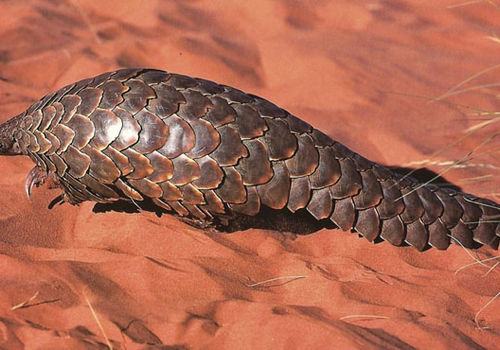
Pangolin
Manis temminckiiPangolin
Introduction: Pangolins (Manis temminckii) are sometimes known as scaly-anteaters because they are covered with large rounded scales over the back and tail, with hair only around the eyes, ears, cheeks and belly. The name is derived from the Malay peng-goling, meaning the roller, from the pangolin's habit of rolling themselves into a ball as a defence mechanism.
It is a savannah species not occurring in forest or desert, favouring scrub, rocky hills and sandveld; habitats that provide their food requirement of ants and termites. They walk on the outer edges of their hands, with claws pointed inwards which goes some way to explaining why they normally keep to dry scrubby country, especially areas with light sandy soil. They are normally slow movers, but can shift if under stress. If touched they will roll up in a ball with their head protected inside. They are nocturnal and can be difficult to observe.
Distribution: Pangolin are widespread in Namibia except for in the southern parts of the country and in coastal desert areas.
Diet: Their primary diet includes ants and termites dug from termite mounds, rotting wood and dung heaps.
Colouring: It is unmistakeable amongst the animal population as it is covered with an armour of overlapping, heavy, brown scales.
Breeding: Only one young is produced at birth, normally during the drier, colder months of the year. Juveniles travel on their mothers back, clinging on using their long front claws clamped under the scales of the female's flanks.
Size: They are roughly the size of a dog and reach an overall length of over 1m and have a mass of between 7 and 15kg. Females are smaller and lighter.
Klein Windhoek

